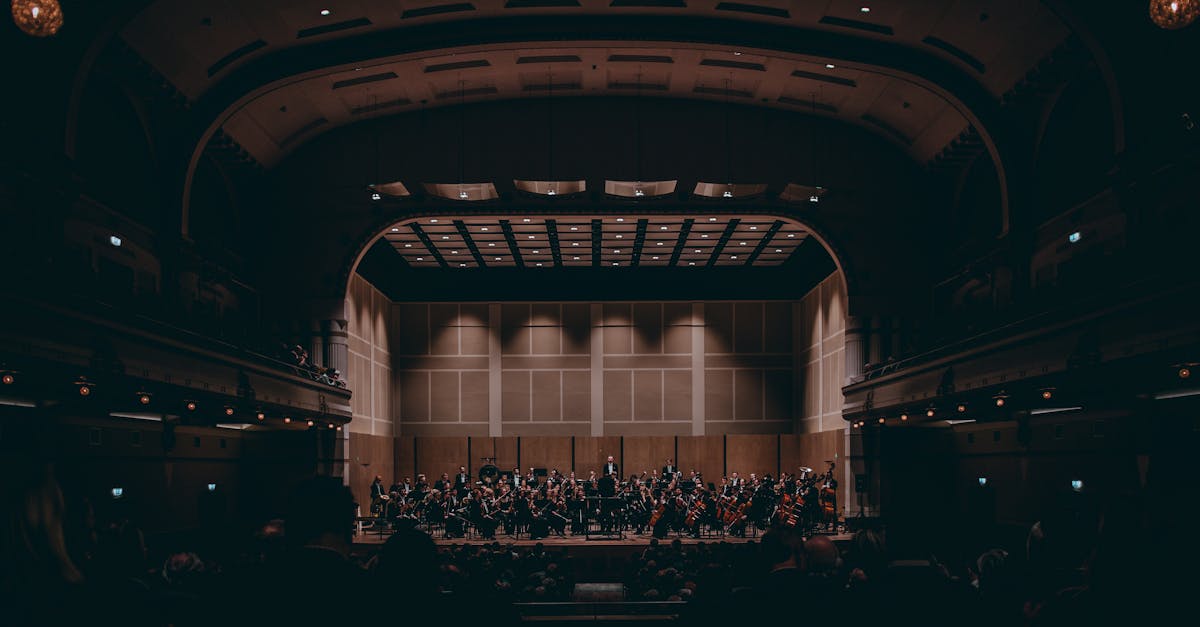Symphonic Sojourns Unveiling Treasures Of Global Sounds
Introduction
Symphonic music is a grand tapestry of sound that weaves together the unique threads of culture, tradition, and artistry. From the mighty orchestras of Europe to the vibrant ensembles of Asia, symphonies encapsulate the rich diversity of global melodies. This article will journey through the universal appeal of symphonic music, exploring its impact across different continents. But what makes symphonic music a timeless treasure? And how have composers infused their unique cultural identities into these orchestral masterpieces? Join us as we uncover the treasures of global symphonic sounds and celebrate the unity they bring to listeners worldwide.
Advertisement
The Birth of Symphonic Music
The symphony's origins can be traced back to the classical music period in Europe, where revered composers like Joseph Haydn and Wolfgang Amadeus Mozart crafted intricate pieces for large orchestras. Initially designed for royal courts and noble gatherings, symphonies soon captured the imagination of wider audiences, forever changing the musical landscape. The 18th and 19th centuries saw symphonic music elevate into a respected art form, with composers experimenting with innovative styles and techniques. Legends like Ludwig van Beethoven propelled the symphonic form into the realms of emotional expression, making it a pivotal part of cultural heritage. Over time, this rich European tradition spread globally, inspiring countless musicians to compose symphonic music, each adding their distinct touch.
Advertisement
Symphonic Sojourns in Asia
While Europe set the stage for many symphonic traditions, Asia contributed its unique voice to the global soundscape. Countries like Japan, China, and India have seen the evolution of symphonic works that reflect rich cultural histories and modern influences. Take China's composer Tan Dun, known for his fascinating fusion of traditional Chinese instruments and Western orchestral arrangements. Meanwhile, Japan's Toru Takemitsu redefined symphonic music by merging traditional Japanese melodies with contemporary classical styles. In India, pioneering composers such as Ravi Shankar have blended classical Indian music into symphonic forms, captivating audiences worldwide. These artistic endeavors have produced breathtaking works that honor traditional roots while embracing global influences.
Advertisement
African Influence in Symphonic Scores
Africa's contribution to symphonic music showcases the continent's vibrant heritage and storytelling traditions. The rhythmic complexity and vibrant melodies found in traditional African music have permeated symphonic compositions, transforming them with fresh perspectives. Composers like Ghana's Nketia have skillfully incorporated African drumming techniques into orchestral works, resulting in unique symphonic experiences. South African composer Bongani Ndodana-Breen's works often highlight a blend of African instruments and European harmonies, bridging cultural divides. These compositions not only pay homage to Africa's musical roots but also inspire global audiences to engage with this transformative genre.
Advertisement
The Americas Embrace Symphonic Traditions
In North and South America, symphonic music has evolved as a platform for cultural exchange. The Americas boast a diverse array of symphonic expressions, from the distinctive sounds of the United States to the passionate rhythms of Latin America. Gershwin's compositions, like "Rhapsody in Blue," embody the fusion of jazz and classical symphonic forms. Across the continent, Latin American composers, like Brazil's Heitor Villa-Lobos, have infused folk traditions into orchestral works, creating lively and colorful symphonic pieces. These inventive approaches continue to shape symphonic music into an engaging celebration of America's rich cultural tapestry.
Advertisement
The Power of Symphonic Collaboration
One of the most rewarding aspects of symphonic music is its capacity for collaboration between cultures, musicians, and composers. Globally renowned orchestras frequently collaborate with musicians and composers from diverse backgrounds, creating unforgettable performances. Projects like "Silk Road Ensemble" and "Cultural Crossings" showcase the magic of bringing together musicians from different realms, underscoring the universality of music in fostering unity. These symphonic collaborations not only celebrate cultural differences but also encourage dialogue and mutual understanding, opening the door to new creative possibilities.
Advertisement
Technological Advancements in Symphonic Music
Modern technology has played a vital role in enhancing the symphonic experience, bridging gaps between cultures and expanding reach. Digital platforms allow orchestras to connect with audiences worldwide, broadening accessibility and appreciation for symphonic music's beauty. Furthermore, technology enables composers to experiment with electronic elements, creating innovative sounds that resonate with contemporary listeners. Projects like "Virtual Concert Halls" offer remote symphonic experiences, providing opportunities for people globally to engage with music's poignant storytelling. These technological advancements ensure that symphonic music thrives in the digital age, captivating diverse audiences with transformative sonic experiences.
Advertisement
Education and the Future of Symphonic Music
Educational initiatives play a crucial role in cultivating a love for symphonic music among future generations. Schools and community programs globally emphasize the importance of music education, fostering an appreciation for symphonic art forms. These programs often collaborate with professional orchestras, allowing students to experience live performances and engage with esteemed musicians. As a result, new generations of composers, conductors, and musicians emerge, ensuring symphonic music's continued evolution. By nurturing an understanding and appreciation of symphonic music, educational endeavors promise a thriving future for this cherished genre.
Advertisement
Symphonic Music as a Cultural Bridge
Symphonic music has the remarkable ability to transcend cultural boundaries, acting as a conduit for understanding and connection. Worldwide, symphonies play a pivotal role in fostering intercultural dialogue, breaking down barriers, and creating pathways for peace. As we continue to explore each other's musical heritage, symphonic music serves as a testament to the unity of humanity and shared cultural narratives. This cultural bridging unites individuals globally, with symphonies offering a collective experience that transcends words. Such communal gatherings nurture empathy, solidarity, and awareness, demonstrating symphonic music's capacity to unite diverse cultures.
Advertisement
Summary and Conclusion
Symphonic music offers a unique window into the vast tapestry of global cultures, uniting us with shared melodies and rhythms. As it continues to evolve, symphonic music embraces technological advancements and educational initiatives, ensuring its enduring legacy. The unique infusion of diverse cultural elements into symphonic compositions enriches our world, celebrating a shared artistic heritage. From Europe to Asia, Africa, and the Americas, symphonic music represents a harmonious blend of tradition and innovation. In essence, symphonic music serves as a bridge between cultures, inspiring global audiences with its grandiose and timeless beauty.
Advertisement







